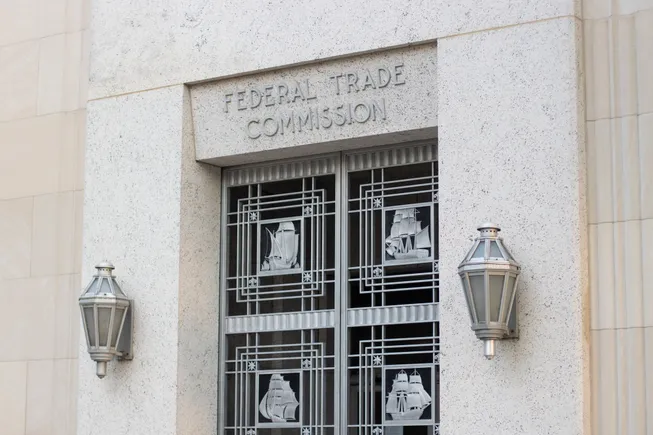This audio is auto-generated. Please let us know if you have feedback.
Semaglutide, the popular drug sold by Novo Nordisk as Ozempic for diabetes and Wegovy for weight loss, is among a group of widely used medicines selected by the U.S. government for the next round of price negotiations under a 2022 law aimed at curtailing pharmaceutical costs within Medicare.
The Biden administration released the list of 15 drugs on Friday in one of its final acts of healthcare policy before President-elect Donald Trump takes office on Jan. 20.
Publication of the list kicks off a monthslong process that will feature a series of meetings between drugmakers and the Centers for Medicare and Medicaid Services, which oversees the Medicare insurance program. The negotiations, which drugmakers have opposed vociferously, will yield “maximum fair prices” that take effect in 2027.
Also on the list are Xtandi, Ibrance, Calquence and Pomalyst, blockbuster drugs for cancers of the prostate, breast, blood and bone marrow. Trelegy Ellipta, an inhaler used for asthma and chronic obstructive sleep apnea, is included, as are Otezla, a psoriasis medicine, and Vraylar, an antipsychotic.
Ozempic and Wegovy are particularly significant inclusions. Their use in the U.S. has skyrocketed due to the potency of semaglutide, which is the active ingredient of both, in helping control diabetes and shed weight. While Medicare is barred from covering drugs solely for weight loss, Wegovy is also approved to lower cardiovascular risk in people with heart disease who are either overweight of who have obesity.
Some 5.25 million people covered by Medicare took one of the 15 selected medicines between November 2023 and October 2024, according to information provided by CMS. Over that period, gross spending by Medicare on those products totaled $41 billion, or about 14% of total prescription drug costs under the program’s “Part D” benefit.
“The U.S. has the most innovative treatments in the world,” said CMS administrator Chiquita Brooks-LaSure on a call with reporters. “But that’s only meaningful if people can actually access them.”
Medicare’s power to negotiate drug prices in this fashion is newly granted by the Inflation Reduction Act, which Congress passed two years ago in a significant defeat for the pharma industry.
For the first time, the law allows Medicare to use its scale and market power to extract price concessions from drug companies on certain, select medicines. Only “single-source” branded drugs that lack generic competition and are among the 50 products with the highest spending in Medicare Part D can be picked. Part B drugs, which include medicines administered by physicians, are exempt from the first two cycles of negotiations.
The Inflation Reduction Act also specifies that selected drugs must have been on the market in the U.S. for either seven or 11 years depending on whether they are small molecules or biologics, respectively.
CMS chose 10 drugs for the first round, which concluded last summer with the publication of the discounted prices government negotiators extracted from companies. According to the agency, the new prices were on average 38% to 79% lower than the drugs’ list price, or wholesale acquisition cost.
Assessing savings from those efforts is complicated, however. Health plan sponsors that contract with the government to administer Part D benefits already secure drugmaker rebates that can result in significantly lower net prices. Those net prices are not public, so it’s hard to precisely compare the negotiated prices on the first 10 drugs, which take effect in 2026, to what Medicare paid previously.
For this second round, CMS tweaked the rules guiding negotiations, allowing for more meetings with drugmakers and greater input from patients and physicians.
The pharma industry has lambasted the process as essentially price-setting, rather than a true negotiation, because the Inflation Reduction Act gives CMS the power to levy exceptionally steep fines if drugmakers don’t accept the offered “maximum fair price.”
During the first round of negotiations, CMS said it revised its initial offers upwards over the course of meeting with drugmakers. For five of the 10 drugs, the agency reached an agreement with the respective drugmaker as a result of a negotiation meeting. For the other five, the relevant company accepted CMS’ final written offer, per a fact sheet published in August.
Drugmakers have also argued the Inflation Reduction Act’s different treatment of small molecules and biologics is skewing R&D incentives away from the former type of medicine, which are often made in convenient oral doses.
A handful of pharma companies have sued to block the law on various grounds, including its constitutionality, but have so far been unsuccessful. On Wednesday, generic drugmaker Teva Pharmaceutical joined in, filing a suit in U.S. district court that challenges how CMS has interpreted the law.
While Trump may not seek to repeal the Inflation Reduction Act wholesale, it’s uncertain how his administration will handle the negotiations, which will take place between now and November 2025 for this second round. Pharma companies are unpopular in the U.S., and the law gives Trump an opportunity to take credit for bringing down drug prices.
However, drugmakers seem to think they have an opportunity: Eli Lilly and others plan to ask the Trump administration to pause negotiations, according to reporting by Bloomberg.
On the call with reporters, Brooks-LaSure emphasized how CMS’ actions were taken in accordance with the Inflation Reduction Act. “The law is clear and straightforward in how it specifies the criteria for how the drugs are selected for negotiation,” Brooks-LaSure said. “CMS followed the law’s criteria, and that is how we determined the 15 drugs for selection.”

 1 day ago
1
1 day ago
1















.png)

.png)
.png)
.png)













 English (US) ·
English (US) ·  Hindi (IN) ·
Hindi (IN) ·